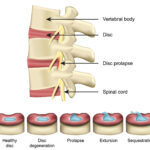Depression and anxiety is a complex topic that can deliver a broad range of confusing and sometimes debilitating symptoms.
Aside from mental health concerns associated with these health conditions, they can also generate a fair amount of physical pain.
The way pain is associated with depression and anxiety can vary greatly, but current research offers more than enough insight to provide a detailed understanding.
This article will focus on how pain, depression, and anxiety correlate and the mix of symptoms that come with them.
Depression and Anxiety Disorders
Nearly every human will experience varying levels of depression at some point in their lives.
It’s a psychiatric disorder that can directly affect aspects of your health, mood, and behavior. Whether it exists in the short or long term, depression can generate feelings of emptiness, sadness, or a loss of interest in your favorite activities.
Other common symptoms of depression include:
- Erratic sleep patterns
- Trouble with concentration
- Loss of appetite
- Lower energy levels
In regard to physical pain, depression is known to be associated with headaches, body aches, digestive problems, and much more. The first signs of depression in a person’s life are generally found in late adolescence or early adulthood.
However, depression can be found in many different stages of life.
Considering the common nature of depression, many people let it go left untreated. Regardless of how common depression may be, leaving it untreated can lead to recurrence down the road. In mild to more severe cases, depression can make daily life extremely hard to manage.
Although depression and anxiety go hand-in-hand in many cases, both come with similar and unique characteristics of their own.
What Makes Anxiety Different?
Those who experience anxiety are prone to feelings of dread, fear, or uneasiness, which are common reactions to different levels of stress. Like depression, anxiety can be rather inconsistent or a constant problem in a person’s everyday life.
The presence of anxiety can also interfere with regular activities, and this can lead to an increase in stress. Anxiety can deliver a cycle of feelings that can be rather exhaustive and cause a variety of physical symptoms.
A variety of disorders are associated with anxiety, and you can find some common examples down below.
- Panic disorder
- A variety of phobias
- Generalized anxiety disorder (GAD)
GAD refers to long-term experiences with anxiety on a daily basis for half a year or more. Panic disorders are commonly associated with anxiety and can easily pose quite a bit of pain. If they’re bad enough, panic attacks can cause painful muscle contractions and even seizures.
Getting the right treatment for depression or anxiety requires understanding what causes them and how they’re diagnosed. Both medical conditions are pretty common among most people, but how they affect each individual can be somewhat unique.
Causes for Depression and Anxiety
There are genetic components that play into the prevalence of depression. It should be highlighted that research is still considered to be in the early stages, but there’s still plenty of data available to understand how depression works.
It’s believed that a variety of genes play a part in the development of depression. Genetic risk factors can make it possible to develop numerous disorders.
This can either cause depression directly or come as a side effect of other disorders with similar symptoms.
The genes associated with depression include numerous functionalities in the brain:
- Neuronal growth
- Neurotransmitter regulation
- Maintenance
- Maturation
- Synaptic plasticity
There are also several environmental factors and lifestyle choices that can lead to depression.
Some of these include stressful life events, substance abuse, and different medications. Other known risk factors related to depression are social isolation, relationship troubles, childhood abuse, and more.
Physical pain from traumatic injuries or illnesses can also lead to depression. Common illnesses associated with depression include cancer, chronic pains, thyroid disease, and many others.
When it comes to anxiety, generally known causes pertain to brain biology, genetics, stress levels, chemistry, and different aspects of a person’s environment. It’s also known that a variety of risk factors play into the development of anxiety.
Some of these risks include:
- Traumatic events in early childhood or adulthood
- Physical health conditions like arrhythmia and thyroid issues
- Being recluse
- Family medical history of anxiety
Many of the causes, symptoms, and risks associated with depression and anxiety are widely known.
What can seem as unexpected are the different types of pains that can come from these disorders. It doesn’t matter if feelings of depression and anxiety are mild or chronic; a variety of pains can be associated with both of them.
Getting the Necessary Treatment
Thankfully, a wide range of treatments are available for these health conditions, many of which are created to offer many unique benefits. Both disorders are pretty common in different stages of life; many people have sought treatment for them at some point in time.
Common treatments for depression include:
- Psychotherapies
- Brain stimulation therapies
- Counseling
- Specific medications
You’ll find some of the following solutions available for treating anxiety:
- Cognitive behavioral therapy (CBT)
- Medications such as antidepressants
Many people would agree that depression and anxiety can be relatively debilitating as both are known to be persistent. Dealing with these disorders on a daily basis can be exhausting, and when you couple them with physical pain, this is where therapies and medication can be useful.


In Summary
If you were to ask different people about these disorders, they’d likely offer different viewpoints on what the experience is like. Regardless of this fact, physical pain is generally a part of the process to some degree.
Some people are better at managing depression and anxiety than others, but seeking some form of treatment isn’t uncommon to help mitigate the symptoms. Neither of these disorders should be taken lightly or left untreated for extensive periods.









